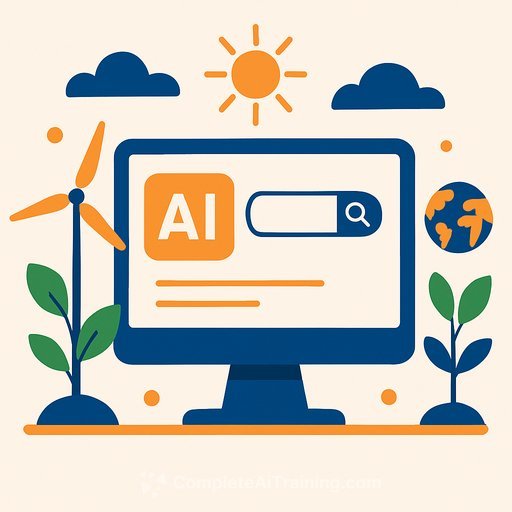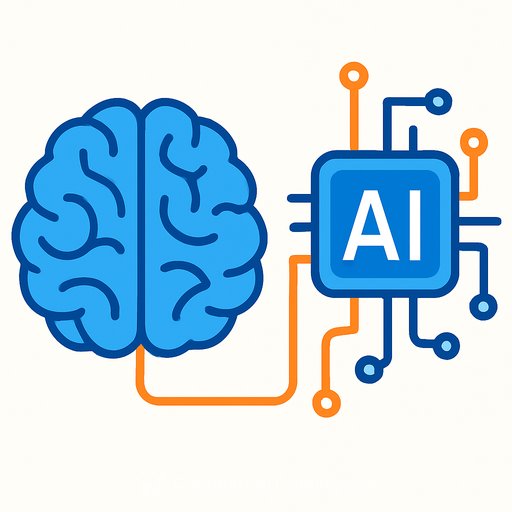5 ways AI can actually help the environment (even with its heavy energy use)
AI has a footprint. Data centers consumed about 1.5% of global electricity last year, and demand could more than double by 2030, according to the International Energy Agency. That surge risks more fossil fuel use.
Here's the other side: the same compute can be pointed at real efficiency wins. From buildings to traffic, AI is already cutting waste and emissions in measurable ways. As Columbia Climate School dean Alexis Abramson puts it, as use grows, so will processing efficiency-so energy demand may not climb as steeply as feared.
1) Smarter buildings that waste less energy
About one-third of U.S. greenhouse gas emissions come from homes and buildings. AI-driven automation can tweak lighting, ventilation, heating, and cooling based on weather, occupancy, and electricity prices-far faster and more consistently than humans.
Scheduling HVAC around arrivals and departures stops the "blast it colder/warmer now" instinct that burns power. For ventilation, models can balance fresh air needs with indoor temperature targets. Predictive maintenance flags failing components before they drag systems into inefficient territory.
Experts estimate 10%-30% energy cuts from these automations. As one researcher put it, this is low-hanging fruit with a fast payback for small and mid-size buildings where full retrofits aren't feasible.
2) Charging that favors the grid-and your bill
AI can schedule the most efficient times to charge EVs and even your phone-typically overnight or during windows with high renewable output. That avoids peak periods that trigger dirtier peaker plants and higher rates.
In California, a pilot shifted charging to cleaner, cheaper hours, saving customers money. The same logic helps homeowners with solar + batteries decide how to store midday surplus and when to discharge or charge from the grid.
3) Lower methane from oil and gas operations
Methane drives roughly 30% of current global warming and leaks during extraction are costly and harmful. When pressure builds in pipes, operators often vent or flare gas-both bad outcomes.
New AI systems can monitor networks of wells, compressors, and pumps, then run physics-informed simulations in seconds to recommend new set points that prevent venting and flaring. What used to take engineers a day and a half of modeling can now be done continuously, at scale. The result: fewer emissions and better throughput.
4) Finding overlooked geothermal heat
Geothermal provides steady, clean electricity by turning underground heat into steam and spinning a turbine. The hard part is knowing exactly where to drill.
AI models can test enormous numbers of subsurface scenarios to pinpoint hot zones and optimal drilling directions. One startup used this approach to repower an underperforming New Mexico plant, then proved up a second discovery in Nevada-despite industry skepticism about the site's temperature. As one founder put it, AI is helping unlock resources that were previously missed.
5) Traffic lights that cut stop-and-go
Passenger cars and small trucks account for about 16% of U.S. greenhouse gas emissions, per the U.S. EPA. Small timing tweaks at intersections can make a big difference.
By analyzing traffic patterns, AI can recommend signal timing that reduces idling and unnecessary braking. In city pilots across four continents-including Boston-systems like Google's Project Green Light report up to 30% less stop-and-go traffic, translating to around a 10% emissions cut at the affected corridors.
What to do next (for teams in science, engineering, and policy)
- Audit your facilities: start with AI-enabled HVAC scheduling, ventilation controls, and fault detection in one building, then scale.
- Set charging defaults: enable delayed EV and device charging during off-peak or high-renewable windows; add dynamic rates where supported.
- Measure methane: deploy continuous monitoring and AI optimization for compressors and pumps to reduce venting/flaring.
- Evaluate geothermal potential: use modern geophysical datasets and AI modeling to reassess "marginal" sites.
- Partner locally: share traffic data with municipal engineers and pilot intersection timing updates on known choke points.
AI isn't a free pass on energy use. But pointed at the right problems-buildings, charging, methane, geothermal, traffic-it can deliver practical, near-term emissions cuts that outweigh part of its footprint. If you're exploring upskilling for these applications, see our latest AI courses.
Your membership also unlocks:






